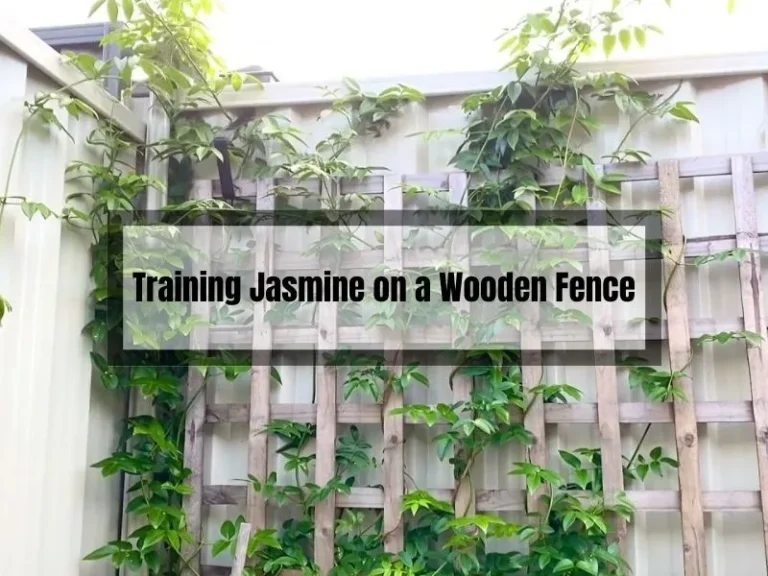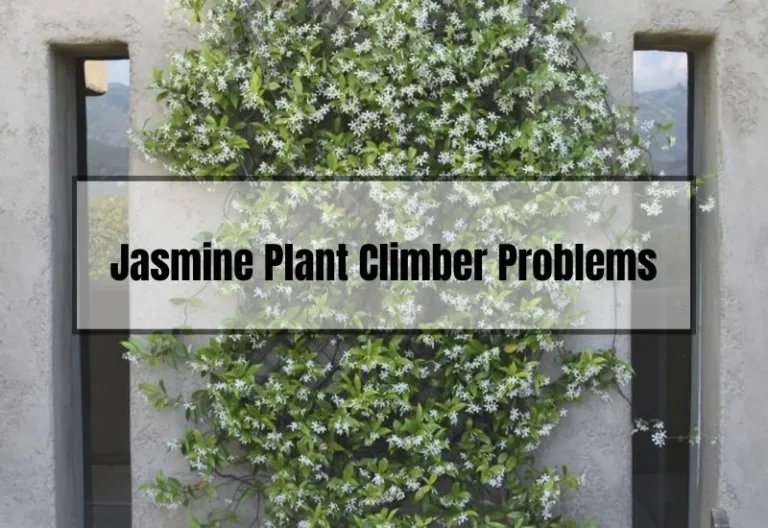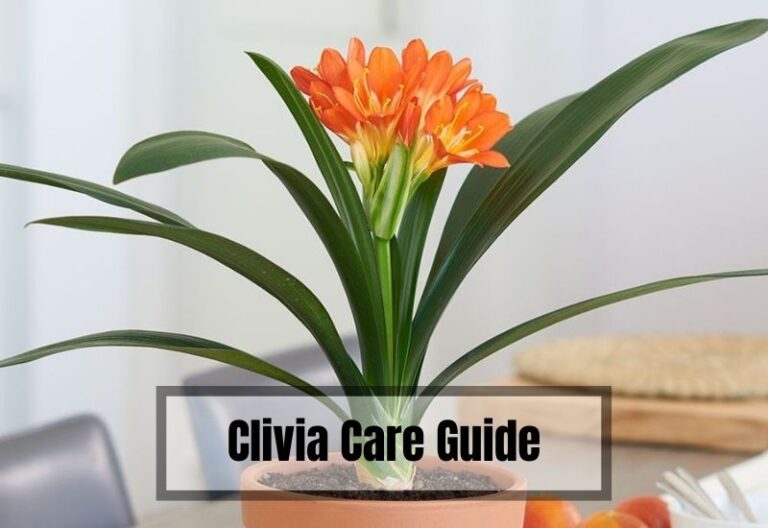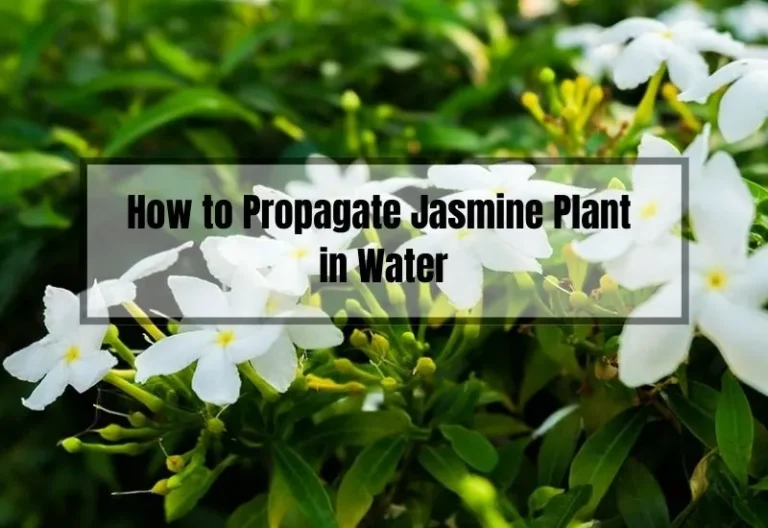Propagating Jasmine Plants Without Rooting Hormone: A Beginner’s Guide
Jasmine plants are popular for their fragrant flowers and versatility in gardening. If you’re interested in propagating jasmine plants, you might have heard about the use of rooting hormone.
However, it’s not always necessary. In fact, there are natural ways to propagate jasmine plants without rooting hormone.
Before we explore these methods, let’s briefly understand jasmine plants. They are typically propagated through stem cuttings, prefer warm temperatures, moist soil, and require ample sunlight. Now, let’s delve into two natural propagation techniques.
Key Takeaways
- Jasmine plants can be propagated without rooting hormone.
- Two natural methods of propagating jasmine plants are water propagation and soil propagation.
- Jasmine plants require warm temperatures, moist soil, and plenty of sunlight to thrive.
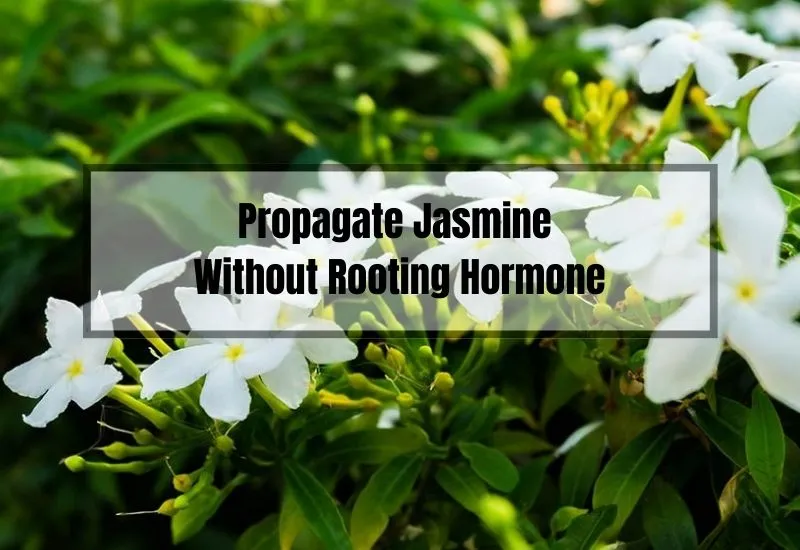
Propagating Jasmine Plants Without Rooting Hormone
Jasmine plants are a beautiful addition to any garden or home, but buying new plants can be expensive. Fortunately, propagating jasmine plants without rooting hormone is an easy and cost-effective way to expand your collection.
In this section, we’ll walk you through the steps to propagate your jasmine plants without using any rooting hormone.
Choosing Healthy Jasmine Cuttings
The first step in propagating jasmine plants is to choose healthy cuttings. Look for a stem that is healthy and free from any disease or damage.
The stem should be about 4-6 inches long and have at least two sets of leaves. Make sure to choose a stem that is not flowering, as this will reduce the chances of success.
Preparing the Cuttings
Once you have chosen your stem, it’s time to prepare the cutting for planting. Start by removing the leaves from the bottom half of the stem.
This will allow the cutting to focus its energy on growing roots instead of supporting leaves. You can use a sharp knife or pruning shears to make a clean cut.
Next, dip the cut end of the stem in water to keep it hydrated. This will help the cutting to grow roots faster. You can also dip the cutting in a rooting hormone if you have one, but it is not necessary.
Planting the Cuttings
After preparing the cutting, it’s time to plant it. Fill a small pot with well-draining potting soil and make a small hole in the center. Insert the cutting into the hole and gently press the soil around it to secure it in place.
Water the cutting lightly, making sure not to overwater it. You can cover the pot with a plastic bag or wrap to create a humid environment, which will help the cutting to grow roots faster.
Caring for New Jasmine Plants
Once your jasmine plants have successfully propagated, it’s crucial to give them the love and care they deserve. Here are some guidelines to help you become the ultimate plant parent:
- Transplanting: Be gentle when transplanting your jasmine plants, as their roots can be delicate. Take your time and handle them with care, and they’ll thank you by flourishing in their new environment.
- Watering: Jasmine plants love moisture, but they don’t appreciate soggy roots. Ensure proper drainage in their pots or planting area to keep them healthy and hydrated without drowning them.
- Fertilizing: Regularly fertilize your jasmine plants with a balanced fertilizer to provide them with the essential nutrients they need to grow strong and beautiful.
Alternative Propagation Methods
When it comes to propagating jasmine plants, rooting hormone is often used to hasten the process.
However, if you don’t have rooting hormone on hand or prefer a more natural approach, there are alternative methods you can use. In this section, we’ll explore two of them: using seeds and layering.
Using Seeds
Starting jasmine plants from seeds is a great way to get ahead of the game. Here’s how to do it:
- Soak the seeds in water for 24 hours before planting to help soften the seed coat and encourage germination.
- Fill a seed tray or small pots with a good quality potting mix.
- Place one or two seeds in each pot, covering them with a thin layer of soil.
- Water the soil well and cover the pots with plastic wrap or a clear plastic bag to create a greenhouse effect.
- Place the pots in a warm, bright location, but out of direct sunlight.
- Keep the soil moist but not waterlogged.
- After the seedlings have grown a few leaves, transplant them to larger pots or directly into the ground.
It’s important to note that growing jasmine from seeds can take a long time and isn’t always successful. However, it’s worth a try if you have the patience and time.
Layering
Another alternative propagation method is layering. Here’s how to do it:
- Choose a healthy, mature jasmine plant with flexible stems.
- Bend one of the stems down to the ground and make a small cut on the underside of the stem where it touches the soil.
- Dust the cut with rooting hormone (optional).
- Cover the cut with soil and secure the stem in place with a U-shaped stake or a rock.
- Water the soil well and keep it moist.
- After a few weeks, roots should start to develop from the cut.
- Once the roots are well-established, cut the stem from the parent plant and transplant it to a new location.
Layering is a great method to use if you want to propagate a specific plant without harming the parent plant. It’s also a good way to ensure that the new plant has a strong root system before it’s transplanted.
Common Mistakes and How to Avoid Them
When propagating jasmine plants without rooting hormone, there are a few common mistakes that many people make.
These mistakes can lead to unsuccessful propagation, so it’s important to be aware of them and take steps to avoid them. Here are some of the most common mistakes and how to avoid them:
Mistake #1: Using unhealthy or weak cuttings
When propagating jasmine plants, it’s important to use healthy, strong cuttings. If you use cuttings that are weak or unhealthy, they may not have the energy or vitality to form roots and grow into healthy plants.
To avoid this mistake, make sure to choose cuttings that are healthy and strong. Look for stems that are green and firm, with no signs of disease or damage. Avoid stems that are wilted, yellowed, or have brown spots.
Mistake #2: Overwatering or underwatering
Another common mistake when propagating jasmine plants is overwatering or underwatering. Both of these can lead to root rot or other problems that can prevent the cuttings from forming roots and growing into healthy plants.
To avoid this mistake, make sure to water your cuttings regularly, but not too much. Keep the soil moist, but not waterlogged. You can use a moisture meter to help you determine when it’s time to water.
Mistake #3: Placing cuttings in direct sunlight
While jasmine plants love sunlight, cuttings that are still forming roots are more delicate and can be damaged by direct sunlight. Placing cuttings in direct sunlight can cause them to dry out and die, preventing them from forming roots and growing into healthy plants.
To avoid this mistake, place your cuttings in a location that receives bright, indirect sunlight. You can also cover the cuttings with a plastic bag or other covering to help retain moisture and protect them from direct sunlight.
Mistake #4: Failing to provide proper nutrients
When propagating jasmine plants, it’s important to provide them with the proper nutrients they need to form roots and grow into healthy plants. Failing to provide proper nutrients can lead to weak or stunted growth, or even death of the cuttings.
To avoid this mistake, make sure to use a high-quality potting soil that is rich in nutrients. You can also add a slow-release fertilizer to the soil to provide additional nutrients as the cuttings grow.
By avoiding these common mistakes, you can increase your chances of successfully propagating jasmine plants without rooting hormone. With a little care and attention, you can grow beautiful, healthy plants that will bring beauty and fragrance to your home or garden.
What is Rooting Hormone and Why Should You Avoid It?
If you’re new to propagating plants, you may not be familiar with rooting hormone. It’s a substance that’s used to encourage root growth in cuttings. While it can be effective, some people prefer to avoid it for various reasons.
First, rooting hormone can be expensive, and not everyone wants to invest in it. Second, some people prefer to use natural methods when propagating plants. Finally, some individuals are concerned about the potential health risks associated with using rooting hormone.
Frequently Asked Questions FAQs
How long does it take for jasmine cuttings to root without rooting hormone?
While rooting hormone can speed up the process, you can still expect roots to develop within a month without it. Patience is a virtue, after all!
Can I propagate jasmine plants from cuttings taken at any time of the year?
Ideally, you should take cuttings from a healthy jasmine plant during its active growing season, which is typically spring or early summer. This will give your cuttings the best chance of rooting successfully.
How do I know when my jasmine seedlings are ready to be transplanted outdoors?
Look for two pairs of true leaves on your seedlings – this is a good indication that they’re ready to be repotted or transplanted. Also, make sure the outdoor temperatures are suitable for your tropical beauties.
Can I grow jasmine as a houseplant instead of transplanting it outdoors?
Absolutely! Jasmine plants can make fantastic houseplants as long as you provide them with adequate sunlight and maintain proper humidity levels. Just be sure to give them a spot near a sunny window to keep them happy.
What are some common issues faced when propagating jasmine without rooting hormone, and how can they be resolved?
Some potential challenges include slow root development, damping off (a fungal disease), and poor initial growth. To combat these issues, maintain proper moisture levels, provide adequate light, and ensure a clean, sterile growing environment.
Conclusion
And there you have it, folks – a comprehensive guide on how to propagate jasmine without rooting hormone! By following these steps and showering your plants with love and care, you’ll be well on your way to creating a jasmine-filled paradise in your garden or home.
Remember, just like any good adventure, the journey may be challenging, but the rewards are oh-so-sweet. So go forth, fellow plant lovers, and enjoy the beauty of your newly propagated jasmine plants!
Related Posts:
- Can You Plant Jasmine and Lavender Together? The Ultimate Guide
- Jasmine Trachelospermum Problems: Causes, Symptoms, and Solutions
- How to Propagate Jasmine Plant in Water: A Comprehensive Guide
- The Ultimate Guide to Pruning Overgrown Jasmine for Maximum Fragrance
- Does Star Jasmine Damage Walls? A Comprehensive Guide



